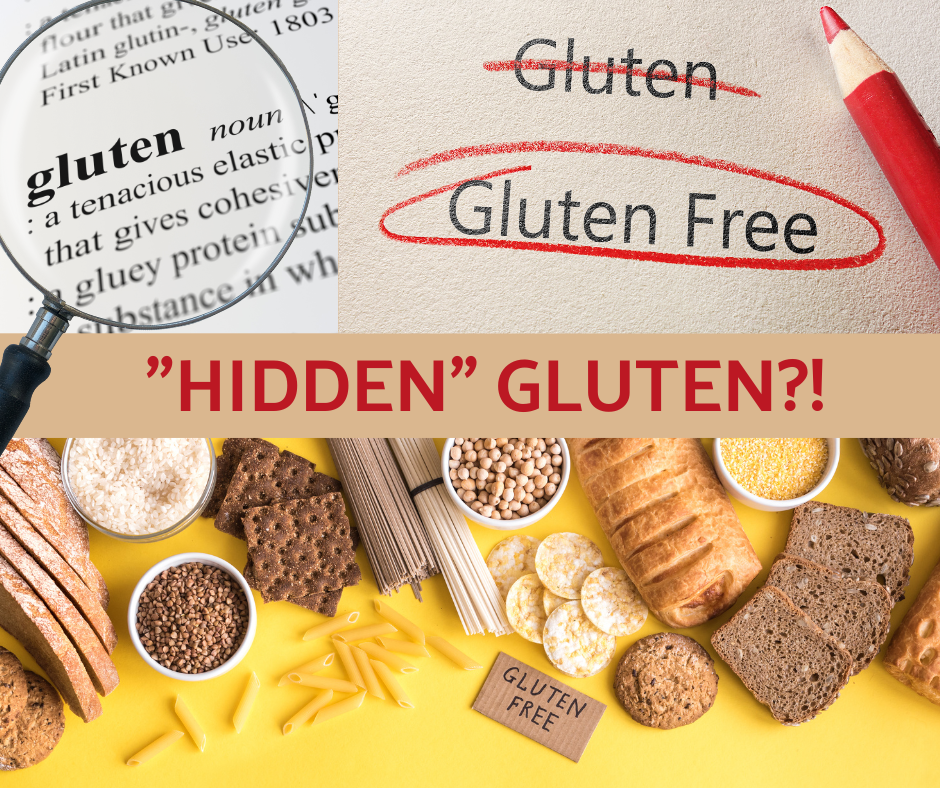Those who believe they can rely solely on the "correct" labeling on products may be exposed to high, unintentional levels of gluten.
Celiac disease (CD) is a systemic immune-mediated disorder caused by gluten ingestion in genetically susceptible individuals. It is one of the most common lifelong diseases, affecting approximately 1% of the population in Europe and North America (1,2). The only available treatment for celiac disease is the gluten-free diet (GFD), which consists of dietary exclusion of gluten-containing grains (i.e., wheat, rye, barley, triticale, semolina or durum wheat, spelt, and kamut) (3). Despite the recognized efficacy of the gluten-free diet, strict adherence to it is very difficult to achieve, with several studies reporting that intentional and unintentional gluten intake occurs in up to 50% of celiac patients (3,4). Prolonged intake of trace amounts of gluten (10-50 mg daily) can damage the small intestinal mucosa (5). In a recent study, the average unintentional gluten exposure of celiac patients was estimated to be approximately 150-400 mg/day (mean), with a high proportion of celiac patients routinely ingesting more than 200 mg of gluten per day (6).
Not everyone affected reacts to hidden gluten
Only 10 to 20 percent of people with celiac disease have the full-blown disease - many have atypical symptoms or no symptoms at all and therefore remain unaware of their disease for a long time. In many cases, however, the disease manifests itself only indirectly through the consequences of malnutrition. For example, iron deficiency can cause anemia, or insufficient calcium intake can lead to osteoporosis. If gluten intolerance remains undiagnosed, developmental delays can occur in children and adolescents due to the deficiency. In adults, further complications include infertility and colon cancer.
What do we mean by "hidden" gluten?
We understand "hidden gluten" to mean gluten in products that is not apparent or visible to the consumer. And there are various reasons for this:
1) Residual gluten in gluten-free products: here, 20ppm (2mg/kg) may still be contained in Germany. Even foods with 100ppm gluten may still be advertised as "Specially formulated for people with celiac disease" if the food has been manufactured in a special way to reduce the gluten content. (7)
2) Foods that have been contaminated with gluten. Either during manufacturing or preparation. The food control agency uses the threshold of 80 ppm for this. Anything below that is not tracked. For example, studies have shown that gluten-free pasta cooked in the same water as pasta containing gluten contained up to 115.7 ppm of gluten. (8)
3) Mislabeled or unlabeled foods. It is a misconception that all foods in Germany are properly labeled. Every year the investigation offices of the food control Baden-Württemberg publish their allergy balance. A report where gluten is also examined.
Products labeled "gluten-free" are also examined. It turned out that in recent years gluten could be found again and again in actually gluten-free products. After 2014 and 2018, the peak was in 2021 with 6% of the samples tested, with just under 4% exceeding the maximum permissible value of 20 ppm. Since this is then a product harmful to the health of those with celiac disease, the public recall of the products took place.

In addition to the "gluten-free" labeled products, hundreds of classic ready-made products were also examined each year. Both pre-packaged products and unpackaged products (open counter) were examined. It is striking that many incorrectly labeled products were found, especially in the case of ready-made products. In 2016, 23% of all packaged products examined were still above the threshold value of 80 ppm and were objected to, but in 2021, in the case of open goods, 31% of all products examined still contained gluten (>80ppm), although gluten was not labeled. (9,10)

Anyone who believes that they can rely solely on the "correct" labeling on products, in restaurants or when traveling and visiting friends may be exposed to a high, unintentional load of gluten.
The goal of anyone affected by gluten intolerance must be to consume as little gluten as possible, and enzymes can assist with this as an additional aid to a "supposedly" gluten-free diet.
However, it is clear that an enzyme product like GluteoStop cannot replace a gluten-free diet. BUT it can help reduce unwanted and unknowing exposure to gluten in addition to a gluten-free diet. And after all, that's what it's all about, adding as little gluten to your body as possible.
SOURCE:
1. Fasano A, Catassi C. Clinical practice. Celiac disease. N Engl J Med 2012;367:2419–26.
2. Lionetti E, Castellaneta S, Francavilla R, et al. Introduction of gluten, HLA status, and the risk of celiac disease in children. N Engl J Med 2014;371:1295–303.
3. Lionetti E, Catassi C. New clues in celiac disease epidemiology, pathogenesis, clinical manifestations, and treatment. Int Rev Immunol 2011;30:219–31.
4. Hall NJ, Rubin G, Charnock A. Systematic review: adherence to a gluten-free diet in adult patients with coeliac disease. Aliment Pharmacol Ther 2009;30:315–30.
5. Catassi C, Fabiani E, Iacono G, et al. A prospective, double-blind, placebo-controlled trial to establish a safe gluten threshold for patients with celiac disease. Am J Clin Nutr 2007;85:160–6.
6. Syage JA, Kelly CP, Dickason MA, et al. Determination of gluten consumption in celiac disease patients on a gluten-free diet. Am J Clin Nutr 2018;107:201–7.
7. DURCHFÜHRUNGSVERORDNUNG (EU) Nr. 828/2014 DER KOMMISSION vom 30. Juli 2014 über die Anforderungen an die Bereitstellung von Informationen für Verbraucher über das Nichtvorhandensein oder das reduzierte Vorhandensein von Gluten in Lebensmitteln
8. Weisbrod VM, Silvester JA, Raber C, McMahon J, Coburn SS, Kerzner B. Preparation of Gluten-Free Foods Alongside Gluten-Containing Food May Not Always Be as Risky for Celiac Patients as Diet Guides Suggest. Gastroenterology. 2020 Jan;158(1):273-275. doi: 10.1053/j.gastro.2019.09.007. Epub 2019 Sep 24.
9. Waiblinger HU, Schulze G. Action Levels for Food Allergens: An Approach for Official Food Control in Germany. J AOAC Int. 2018 Jan 1;101(1):17-22.
10. https://www.ua-bw.de/
